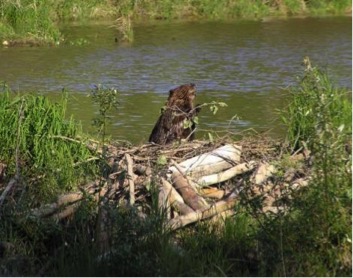[10 minute read]
The seventeenth century was a moment of exploration and imperial expansion for European powers; the Dutch were of no exception. In 1609, Henry Hudson landed in the New World after the East India Company’s failed attempt to find passage to India. Years later, the West India Company (WIC) would be founded in 1621, and played a crucial role in Dutch economic expansion during its Golden Age. As a chartered company primarily intended for economic extension and the accumulation of capital, the WIC set up outposts along the coasts of North and South America, as well as the Western African Coast. However, it was also politically motivated, with semi-sovereign colonial powers in these same locations. In North America, the WIC established a venture colony with Dutch merchants between the English colonies of Virginia and Massachusetts. Beaver pelts constituted their primary trade with the Algonquin Indians along the Hudson River Valley. The Dutch participated in a global trade of pelts, shipping furs to Muscovy and France to be processed into hats or liners for coats.
Adriaen van der Donck’s A Description of New Netherland was first published in the Dutch Republic in 1655, and reprinted in 1656, with the hopes of attracting emigrants to New Netherland. A Description of New Netherland is presented to the reader-observer not as an account of the conquest of the New World, but rather as a mix between an ethnography of the indigenous populations, and a natural history of the new world. An earlier travel account by Johannes de Laet allowed Van der Donck to move beyond descriptions of the coastline and water passageways and instead develop a more in-depth survey of the land’s resources. This survey covers the different rivers, the vegetables and minerals, the animals, and even the elements as they are found within the New World. It then moves on to deliver an ethnographic-like account of the indigenous population; their food, dress, living quarters, medicine and religion, among other facets of their societies. This cartography of resources extends to encompass the beaver, that semi-aquatic animal so highly prized for its pelt. Curiously enough, Van der Donck spends more time describing the temperament of the beaver and its medical properties rather than where to find it, how to capture it, and the process of removing its fur for circulation.

Van der Donck devotes one of the four chapters out of his travel narrative to the beavers of New Netherland. This chapter is entitled, “Of the Nature, Amazing Ways, and Properties of the Beavers.” It refences the global fur trade while examining the agency and complex rationality ascribed to the living beavers. However, the absence of the Dutch from van der Donck’s description of the beavers’ magnificently colored fur used in the hat trade is suggestive that the beaver meant more than a commodity to the New Netherland colonists. The text lingers over the beauty of “the very fine fur,” as it can exhibit the colors “ash gray” and “pale blue,” as well as exhibit “brownish” or “russet” tones, even fading into a “chestnut” or “reddish” warmth (118). The magnitude of colors that the narrator surveys is seductive for the reader-observer as they imagine what types of commodities that they can be fashioned into. The fur hat is the most desired, and the text claims that its popularity has extended across all of Europe stating, “The fur is made into the best hats that are worn, named beavers or castors for the material they are made of and by now well known throughout Europe” (118). Missing from this, however, is the explicit recognition of the involvement of the Dutch in the killing the beavers. The absence of the Dutch as a central node within the network of the capture of beavers, payment of the indigenous peoples, as well as the processing and transport of the pelts divests them of any responsibility in the violence inflicted on the beavers.
Throughout the rest of the chapter, the beavers are given human-like temperaments that eventually blur the human and non-human dichotomy. They are described as “timid” (117, 118, 119), “nonviolent” (120), and “gentle” (123), as well as being concerned about being “secure” and “safe” (118), “seeking refuge” (121) when danger is present. Beavers are, for example, likened to the most vulnerable members of the New Netherland community: “As soon as the young beavers come into the world, they cry like newborn children, so that a person coming to where there is a young beaver, and not being forewarned, may think that a small child is near” (123). Here, van der Donck relates misidentifications between beaver kits and newborn babies. In a similar fashion, beaver mothers are described like women, “the beaver has two teats as women have…the mother then raises herself like a human being sitting up and gives a teat to each of the kits, who lean against the mother’s body like children who stand and suck” (123). Beavers are ascribed the same physiology as women and their behaviors are only understood in relation to humans. This wording associates beavers with certain members of the New Netherland body politic such that the distinction between beavers, children, and women becomes unclear.
The beaver within van der Donck’s travel narrative is unique because it is the only animal given an anthropomorphic description. It has a certain type of excessive liveliness in its demeanor that prevents knowing the beaver as simply the fetishized fur commodity. Travel writing, such as van der Donck’s A Description of New Netherland, suggest that new forms of relationality between humans and animals are possible at the edge of empire.

You must be logged in to post a comment.